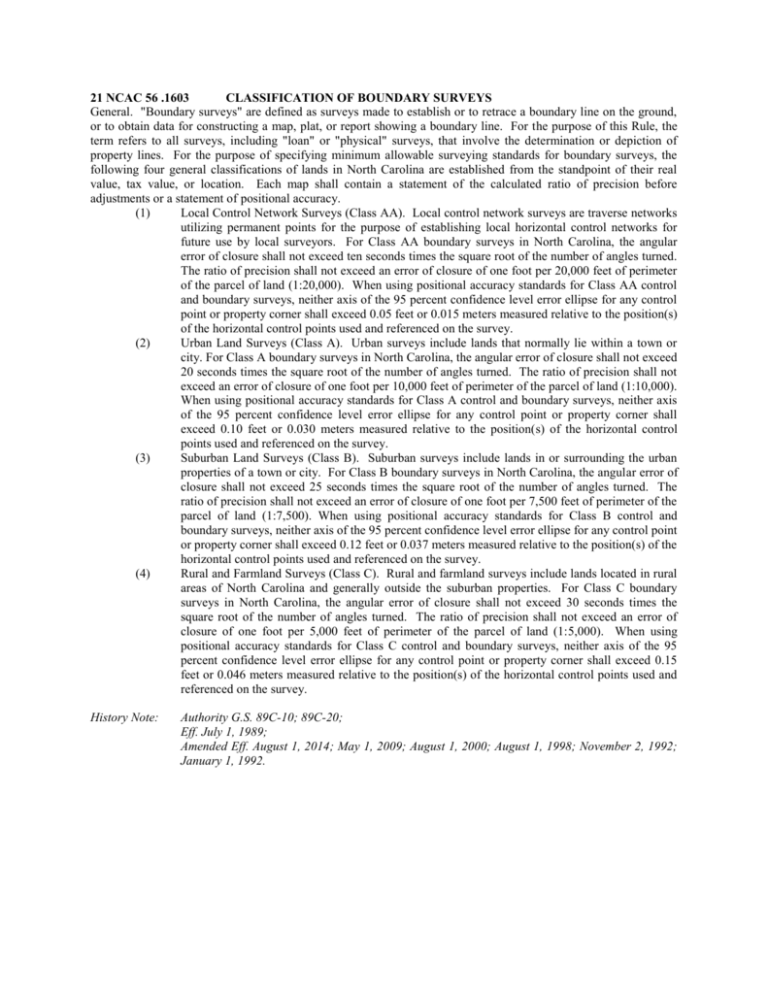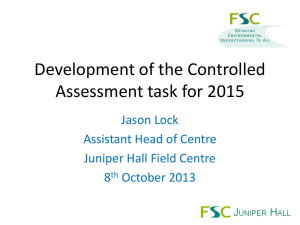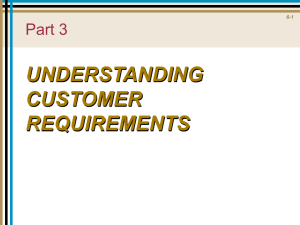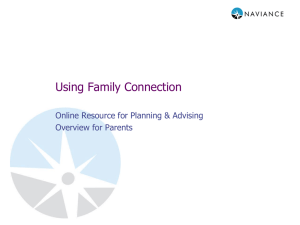DOC - ncrules.state.nc.us
advertisement

21 NCAC 56 .1603 CLASSIFICATION OF BOUNDARY SURVEYS General. "Boundary surveys" are defined as surveys made to establish or to retrace a boundary line on the ground, or to obtain data for constructing a map, plat, or report showing a boundary line. For the purpose of this Rule, the term refers to all surveys, including "loan" or "physical" surveys, that involve the determination or depiction of property lines. For the purpose of specifying minimum allowable surveying standards for boundary surveys, the following four general classifications of lands in North Carolina are established from the standpoint of their real value, tax value, or location. Each map shall contain a statement of the calculated ratio of precision before adjustments or a statement of positional accuracy. (1) Local Control Network Surveys (Class AA). Local control network surveys are traverse networks utilizing permanent points for the purpose of establishing local horizontal control networks for future use by local surveyors. For Class AA boundary surveys in North Carolina, the angular error of closure shall not exceed ten seconds times the square root of the number of angles turned. The ratio of precision shall not exceed an error of closure of one foot per 20,000 feet of perimeter of the parcel of land (1:20,000). When using positional accuracy standards for Class AA control and boundary surveys, neither axis of the 95 percent confidence level error ellipse for any control point or property corner shall exceed 0.05 feet or 0.015 meters measured relative to the position(s) of the horizontal control points used and referenced on the survey. (2) Urban Land Surveys (Class A). Urban surveys include lands that normally lie within a town or city. For Class A boundary surveys in North Carolina, the angular error of closure shall not exceed 20 seconds times the square root of the number of angles turned. The ratio of precision shall not exceed an error of closure of one foot per 10,000 feet of perimeter of the parcel of land (1:10,000). When using positional accuracy standards for Class A control and boundary surveys, neither axis of the 95 percent confidence level error ellipse for any control point or property corner shall exceed 0.10 feet or 0.030 meters measured relative to the position(s) of the horizontal control points used and referenced on the survey. (3) Suburban Land Surveys (Class B). Suburban surveys include lands in or surrounding the urban properties of a town or city. For Class B boundary surveys in North Carolina, the angular error of closure shall not exceed 25 seconds times the square root of the number of angles turned. The ratio of precision shall not exceed an error of closure of one foot per 7,500 feet of perimeter of the parcel of land (1:7,500). When using positional accuracy standards for Class B control and boundary surveys, neither axis of the 95 percent confidence level error ellipse for any control point or property corner shall exceed 0.12 feet or 0.037 meters measured relative to the position(s) of the horizontal control points used and referenced on the survey. (4) Rural and Farmland Surveys (Class C). Rural and farmland surveys include lands located in rural areas of North Carolina and generally outside the suburban properties. For Class C boundary surveys in North Carolina, the angular error of closure shall not exceed 30 seconds times the square root of the number of angles turned. The ratio of precision shall not exceed an error of closure of one foot per 5,000 feet of perimeter of the parcel of land (1:5,000). When using positional accuracy standards for Class C control and boundary surveys, neither axis of the 95 percent confidence level error ellipse for any control point or property corner shall exceed 0.15 feet or 0.046 meters measured relative to the position(s) of the horizontal control points used and referenced on the survey. History Note: Authority G.S. 89C-10; 89C-20; Eff. July 1, 1989; Amended Eff. August 1, 2014; May 1, 2009; August 1, 2000; August 1, 1998; November 2, 1992; January 1, 1992.







